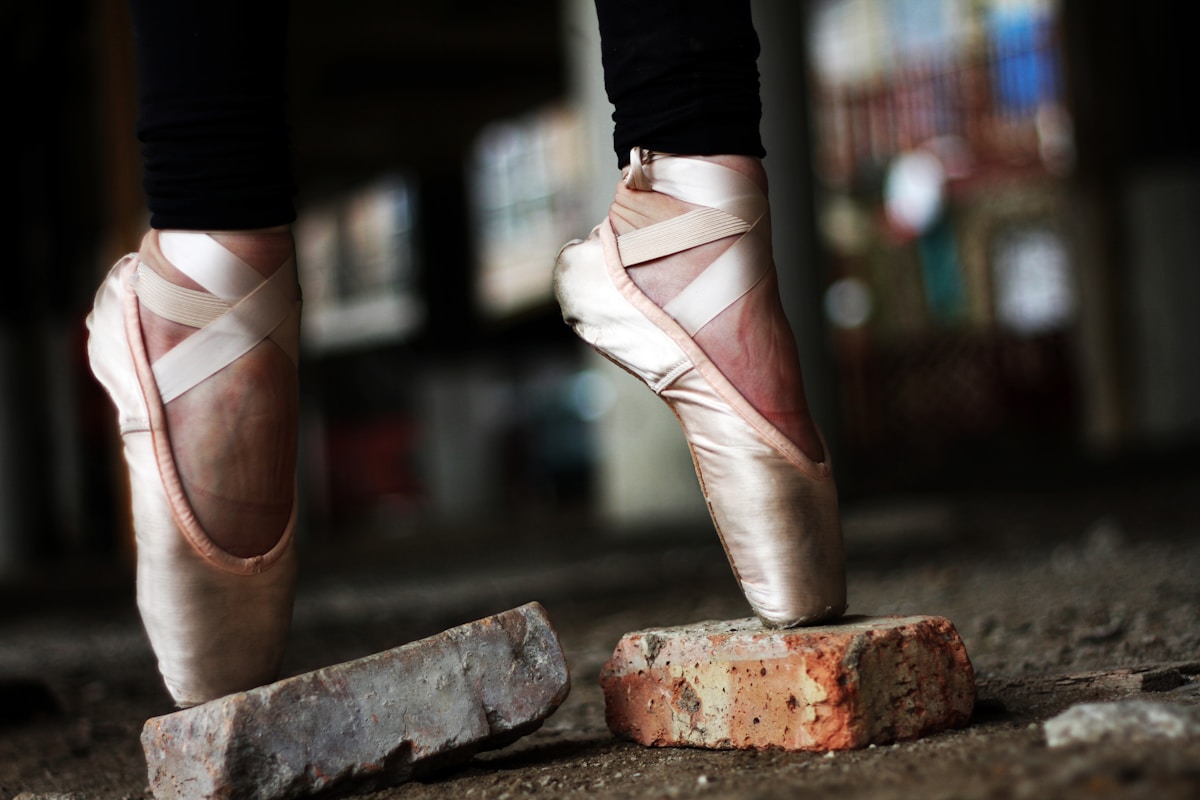A common question asked in the dancing world is
‘When am I ready for pointe shoes?’
- Strength in your legs as well as your core muscles
- Flexibility of your feet and ankles
- Your balance and leg alignment
- Your Age: There is no set age a dancer will be on pointe. The most common age range for getting onto pointe is 10 years to 16 years old
- Your training load: The dancer should be participating in at least 2 ballet classes per week, to maintain their technique in ballet, required for pointe work
- Your level of training and technique: Your level of training can often reflect the level of your strength or technique as a dancer. I would expect/recommend that if you are going to pointe, you would have at least 2-3 years experience in ballet
- your foot shape and access to appropriate pointe shoe fitting: There are MANY styles, shapes, widths, lengths of pointe shoes that are fitted according to your foot shape/strength/flexibility, it is vital that you are fitted by an expert - such as an employee at a Bloch Store.
- Your attitude: Being mindful as to your attitude to being on pointe and your commitment to ballet classes - are you doing it for socialisation? Are you committed to your training and to getting on pointe? Are you wanting to become a professional ballet dancer?

4 tips for getting onto pointe shoes for ballet dancers:
Don’t feel pressured to start pointe by peers or social media.
- Waiting to start pointe can often be rewarding. It gives you time to improve your balance, strength and most importantly, your technique. It is better to have good strong technique and be on demi-pointe, than to have unsteady, faulty technique on pointe - which can be VERY dangerous.
- Be strong and motivated to be strong on pointe. Without strength, good technique and balance, being on pointe can be really hard, scary and dangerous! Make sure, as a dancer, you are committed to your exercises and training and should be participating in at least 2 classes a week. Without this training it will be hard to maintain your technique and strength.
- Stick to your exercises! Ensuring you are committed to your exercises and completing them to assist in building the right muscles, correcting alignment and improving technique
- Seek guidance if you don’t feel ready for pointe shoes. If your teacher, dancer or parent is unsure whether you are ready for pointe shoes, it can be a good idea to have a pre-pointe assessment. A pre-pointe assessment will aim to identify if you are ready for pointe by assessing things such as balance, alignment, strength and flexibility. Other information such as previous injuries, general health conditions and medications can be taken into account and screened for as well.
See Amy here as she describes some of the important factors required for progressing to Pointe

